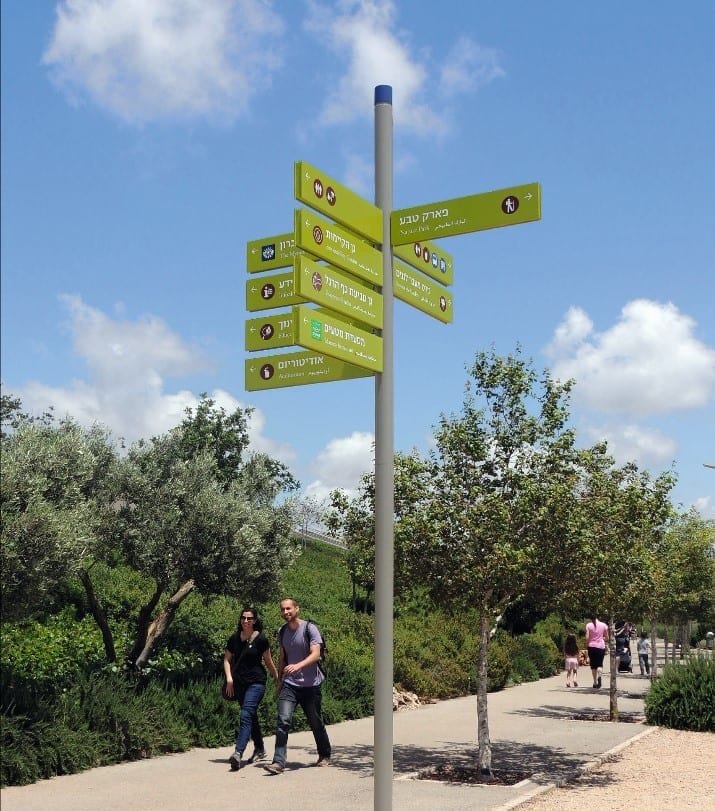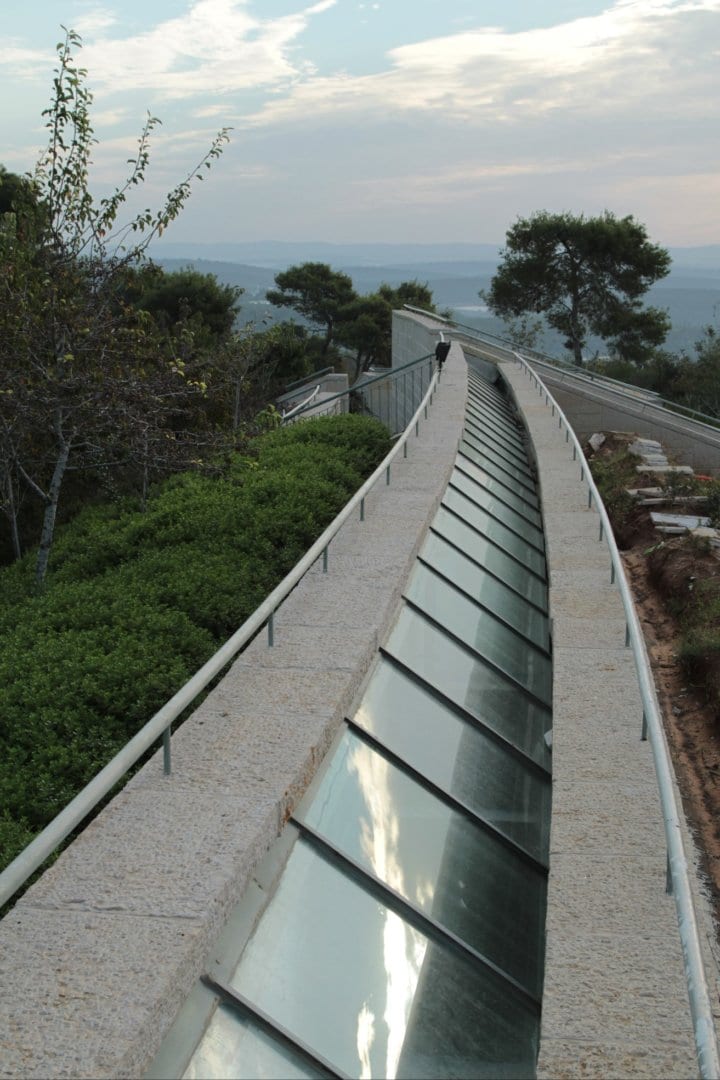Green roof
The green roof of the Visitors Pavilion acts as a ‘green blanket’ that creates a green continuum between the Nature Park and the Memorial Gardens. Covering the roof with soil creates thermal insulation, helps maintain a comfortable temperature inside the building and contributes to saving energy. The trees and shrubs planted on the roof contribute to reducing air pollution and integration of the building into its surroundings.
Lighting with daylight
The Visitors Pavilion is lit up by daylight thanks to the unique design of the building’s roof. Along the entire peak of the building’s roof we installed a glass skylight, through which daylight enters the building. The light enters through the glass, lights up the building’s long corridors with ‘soft light’ and thus saves electricity consumption for lighting.
Air conditioning
The geothermal air-conditioning system installed in the building also contributes to saving electricity. This system is based on the fact that the soil temperature at a depth of 2 m or more remains constant at 21.7 degrees Celsius. Therefore, warm water flowing to the soil’s depths cools down by 5 degrees while cold water flowing to the soil’s depths warms up. In order to cool the Visitors Pavilion, water flows out of it through pipes that descend down shafts that were drilled to a depth of 40 m. At the soil’s depths the water cools rapidly to the soil temperature and flows back up to the building, where it cools the air flowing into the internal spaces of the Visitors Pavilion.
Water
A control system installed in the Visitors Pavilion can send a warning, at any given moment, about any unexpected change in water consumption following a leak or a fault. Likewise, electronic taps were installed in the building’s restrooms to save water. Moreover, wastewater from the Visitors Pavilion is collected and diverted to a ‘biodisk’ wastewater treatment facility in the operations area of Ramat Hanadiv. The fresh water obtained from the purification process is good for irrigation and is used to irrigate the willow trees in the research plot.



